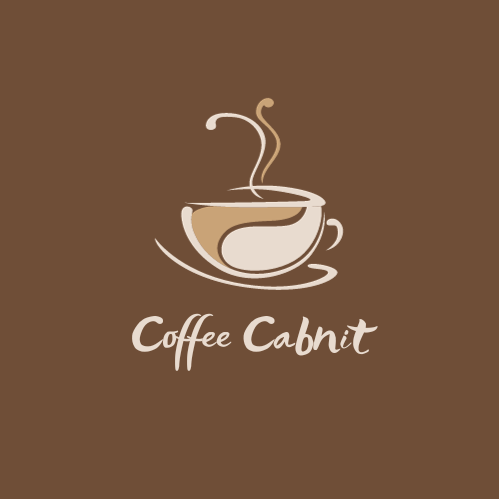Everything you need to know about Mocha Coffee
Mocha, in the realm of technology, is not a delectable blend of chocolate and coffee. It’s a feature-rich JavaScript test framework running on Node.js, making asynchronous testing straightforward and fun. Mocha offers developers a simple and flexible way to write accurate and robust tests for their JavaScript codes, ensuring their applications run smoothly and as expected.
A Closer Look at Mocha, Whats Mocha?
Mocha is an open-source JavaScript testing framework known for its flexibility and compatibility with major libraries and testing tools such as Chai, Sinon, and Istanbul. It is primarily used for unit testing Node.js projects and browser-based applications. The primary objective of Mocha is to make asynchronous testing simpler and more efficient. It provides a rich set of features, including test case generation, asynchronous testing, test coverage reports, and use of any assertion library.
Mocha’s flexibility extends to its structure as well. It allows for nested grouping of test cases, which aids in organizing and managing complex test suites. This structure, coupled with its easy-to-read syntax, makes Mocha a go-to choice for many developers when it comes to JavaScript testing.
What’s in a Mocha?

The Ingredients of Mocha
At its core, Mocha comprises four main components, each playing a crucial role in streamlining your testing process.
1. Test Cases
Mocha works by developing test cases, which are individual units of code meant to test a specific function in your application. These test cases can be grouped together to form a test suite, allowing for organized and efficient testing.
2. Hooks
Mocha’s hook functions are key to setting up conditions required before running tests, and cleaning up after them. These include `before()`, `after()`, `beforeEach()`, and `afterEach()`.
3. Interfaces
Mocha provides several user interfaces that dictate how your test cases are structured and how the output from your tests will be displayed. The most commonly used interfaces are the BDD (Behavior-Driven Development), TDD (Test-Driven Development), and QUnit styles.
4. Reporters
Last but not least, Mocha uses reporters to display the results of your tests. Reporters vary from simple diagrams to more complex layouts depending on your needs, with popular options like Dot, Spec, and Nyan reporters.
Together, these components make Mocha a powerful tool for conducting robust, organized, and efficient tests on your JavaScript applications.
Why Choose Mocha?
With Mocha, you can organize and execute your tests sequentially, allowing for flexible and accurate reporting while mapping uncaught exceptions to the correct test cases. Its use of the “describe” and “it” blocks makes test codes more readable and structured. Moreover, Mocha’s compatibility with most assertion libraries makes it an optimal choice for diverse testing requirements.

Mocha is not just about testing; it’s about writing better codes and building reliable software. And that’s what makes it more than just a name; it’s a framework of choice for JavaScript developers.
Getting Started with Mocha
To get started using Mocha, you need to install it globally using npm. Once installed, all you have to do is create a test file, and you’re ready to go. Mocha also allows customization; you can configure it to your desired settings by adding a “mocha.opts” file in the root directory or passing command-line arguments while executing the test file. This flexibility allows developers to tailor Mocha according to their project’s specific needs.
Testing Made Easy with Mocha
One of the most significant advantages of using Mocha is its support for asynchronous testing. With traditional unit testing frameworks, asynchronous tests can be challenging to write and maintain; however, with Mocha, it becomes a breeze. Mocha’s “done” callback function makes asynchronous testing intuitive and straightforward.
Moreover, Mocha provides a robust error handling system, allowing for accurate identification of test failures. It also allows for the use of before(), beforeEach(), after(), and afterEach() functions to set up preconditions and clean up after each test case. This feature simplifies complex tests and minimizes coding errors.
Understanding Mocha Latte: A Tasty Treat
What is Mocha Latte?
Turning away from the technical world for a moment, ‘Mocha Latte’ takes us back to the cozy realm of coffeehouses. A Mocha Latte, or commonly known as ‘Cafe Mocha,’ is a delightful variant of a caffe latte with a dash of chocolate. The traditional Mocha Latte is a harmonious blend of espresso, steamed milk, and chocolate, typically topped with whipped cream. The name ‘Mocha’ for this coffee concoction comes from the city of Mocha, Yemen, from where the Mocha beans were originally shipped. These beans had a distinct chocolate flavor, leading to the term ‘mocha’ becoming synonymous with any coffee with a hint of chocolate. Now relished globally, Mocha Latte is a perfect treat for those who enjoy the richness of coffee moderated with the sweetness of chocolate.
Mocha Flavor: A Delectable Blend of Coffee and Chocolate
In the culinary world, the term “Mocha” signifies a delightful mix of coffee and chocolate flavors. Named after the Yemeni city of Mocha, which was a prominent hub for coffee trade in the 15th century, the Mocha coffee had a distinct chocolatey taste. Today, a typical Mocha or Café Mocha is essentially a chocolate-flavored variant of a café latte. It usually involves one shot of espresso mixed with hot milk and the addition of cocoa or chocolate. The result is a rich, creamy beverage that balances the robust bitterness of coffee with the sweet allure of chocolate, offering a flavor that is deeply satisfying and universally loved.
Mocha: More Than Just a Name, It’s a Culture
In the world of software development, naming conventions hold significant value. They provide insight into the purpose and functionality of codes, frameworks, libraries, or tools. The same goes for Mocha; it’s more than just a name; it’s a culture that embodies reliability, flexibility, and simplicity in the world of JavaScript testing.
The Perfect Mocha: A Step-by-Step Guide

Making the perfect Mocha at home is easier than you might think. Follow these simple steps to recreate the magic of a café-quality Mocha within the comfort of your home:
Ingredients:
- 1 shot of espresso or 1/2 cup strong brewed coffee
- 1 cup of milk
- 2 tablespoons of unsweetened cocoa powder
- 2 tablespoons of sugar
- Whipped cream (optional)
- Chocolate shavings or cocoa powder for garnish (optional)
Instructions:
- Make the Coffee: Brew a shot of espresso or make half a cup of very strong coffee.
- Prepare the Chocolate Mixture: In a saucepan, combine the cocoa powder and sugar. Add a few tablespoons of milk to create a thick paste. Then, slowly whisk in the rest of the milk.
- Heat the Mixture: Place the saucepan over medium heat. Keep stirring until the mixture is hot, but not boiling, and the cocoa and sugar are well dissolved.
- Combine Coffee and Chocolate Mixture: Pour the hot chocolate mixture into the cup of strong coffee or espresso shot. Stir well to combine.
- Add the Finishing Touches: Top your Mocha with a generous dollop of whipped cream. Sprinkle some chocolate shavings or a dusting of cocoa powder on top for that extra touch.
Enjoy your homemade, café-style Mocha! Remember, the key to the perfect Mocha lies in the quality of the ingredients. Use high-quality coffee and cocoa for the best results.
Mocha: A Confluence of Coffee and Chocolate
Is mocha Coffee?
Mocha, in the context of coffee, is a term derived from the city of Mocha in Yemen, which was a key center for the trade of coffee beans during the 15th century. These beans were distinct for their chocolate-like flavor, hence the term Mocha was used to denote any coffee with a hint of chocolate. Today, a Mocha or Mocha coffee typically refers to a variant of a café latte, with the addition of chocolate or cocoa. This fusion of robust coffee and rich chocolate creates a unique, indulgent beverage loved by coffee connoisseurs and chocolate lovers alike. Whether enjoyed as a morning pick-me-up or an afternoon indulgence, the Mocha coffee offers a smooth, creamy, and uniquely satisfying flavor profile.
Frequently Asked Questions (FAQs)
1. What is Mocha in software testing?
Mocha is a feature-rich JavaScript testing framework that runs on Node.js and in the browser. It provides the tools necessary to create, run, and build structured tests for asynchronous applications and services.
2. How do I get started with Mocha?
To start using Mocha, you need to install it globally using npm (Node Package Manager). After installation, you can create a test file and run your tests. Mocha also allows customization through a ‘mocha.opts’ file or command-line arguments.
3. What makes Mocha different from other testing frameworks?
Mocha stands out for its flexibility in testing asynchronous applications, robust error handling, and the ability to create detailed and organized test reports. Moreover, it supports both BDD and TDD interfaces.
4. What is a Mocha Latte?
A Mocha Latte is a variant of a caffe latte with the addition of chocolate. It’s a blend of espresso, steamed milk, and chocolate, often topped with whipped cream. The term ‘Mocha’ is derived from the city of Mocha, Yemen, where Mocha beans with a distinct chocolate flavor were originally shipped.
5. Is Mocha coffee?
Yes, in the context of coffee, Mocha refers to a variant of a café latte with the addition of chocolate. The term is derived from Mocha beans originally shipped from Mocha, Yemen, famous for their chocolate-like flavor. Today, a Mocha coffee is a rich blend of coffee and chocolate, offering a unique flavor loved by many. The word ‘mocha’ has also become synonymous with any coffee drink that includes a hint of chocolate.
6. Can Mocha be used with other assertion libraries?
Yes, Mocha can be used with any assertion library that throws errors when assertions fail. Some popular choices include Chai, Should.js, and Unexpected.
7. What is the origin of Mocha coffee?
Mocha coffee is named after the Yemeni city of Mocha, which was a prominent coffee trading port in the 15th century. The Mocha beans shipped from this city had a distinct chocolate-like flavor, leading to ‘Mocha’ being associated with coffee that has a hint of chocolate.
8. Is Mocha only for browser-based testing?
No, Mocha is not only for browser-based testing. It runs on Node.js, which means it can test server-side code, command line tools, and even APIs.
9. What kind of chocolate is used in a Mocha Latte?
The type of chocolate used in a Mocha Latte can vary according to preference. Some baristas use chocolate syrup, while others may use cocoa powder or even melt a piece of dark chocolate into the espresso.
10. Can I use Mocha for testing asynchronous code?
Absolutely, Mocha provides out-of-the-box support for testing asynchronous code. It makes writing tests for asynchronous operations easy and intuitive.
In Conclusion
Mocha is not just another testing framework; it’s a culture that embodies the perfect blend of reliability, flexibility, and simplicity in the world of JavaScript testing. With its support for asynchronous testing, robust error handling system, and customizable features, Mocha has become a popular choice among developers. But beyond the software realm, Mocha also represents a delicious fusion of coffee and chocolate flavors loved by many for centuries. Whether you enjoy it as a beverage or use it for testing your code, one thing is for sure – Mocha will always deliver an indulgent and satisfying experience. So go ahead, brew yourself a Mocha coffee and experience the best of both worlds.

